Client:Constellation Automotive Group
Region:Europe
Industry:Retail
Employees at Constellation Automotive Group Have More Time to Focus On Customers

1.1M
transactions per month with RPA
126,000
working hours saved for employees to focus on customer
30+
processes automated
81
FTE workload covered by robots
Client Overview
Constellation Automotive Group is a leading operator of digital and physical used car auctions and associated ancillary automotive services in the UK and Continental Europe, with market-leading positions in all its markets. In the UK, Constellation, operating under the brand of BCA Marketplace, is the largest integrated service provider across the vehicle life-cycle, coming into contact with approximately 11 million unique vehicles annually and selling over 1 million used cars.
Constellation Automotive Group (CAG) sources and sells over 1 million used cars each year. Doing so results in employees completing lots of complex processes. This has been automated at an astonishing rate in the last two years, handing back over 126,000 hours of time to employees to focus on customers thanks to 31 processes being automated.
If you’ve ever bought or sold a car privately, you’ll know there are multiple processes that need to happen. From searching, browsing, planning, paying, and post-sale processes.
If you multiplied this process by a million, and turned it into a fully functioning business, imagine the scale of the administrative task. It'd be colossal. That’s exactly what Constellation has done. At heart, it’s a business that processes and sells vehicles for vendors at a large scale across an entire continent.
Tanny Chiragh, Director of Business Efficiency and RPA Sponsor, says “working in partnership with Constellation’s CTO, we began our RPA journey, which started in April 2019.”
“At the time, we had a challenge on our hands. Some of the work being done when processing vehicles needed to be revisited, owing to human errors. Some customers felt the speed of service could have been faster and there were issues with the quality of data, compliance, and customer experience. Most importantly, this impacted employee engagement owing to the repetitive and unrewarding nature of some tasks.”

To an extent, these challenges exist in all large process-driven businesses. After all, as humans sometimes we make mistakes. The skill lies in reducing them. “I challenged my team led by Nikolaos Dimitrellos, now Head of RPA, to consider how automation could help,” adds Tanny.
“We realized that RPA could remove the need to re-work some processes entirely. It could also speed up activity, assure data quality, and offer 100 percent compliance. As a result, customer experience would significantly improve in addition to employee satisfaction. In short, RPA could improve every KPI our team has.”
This is when Constellation’s automation journey started to accelerate. In the first quarter of 2019, the team mapped out current end-to-end processes, understood operational pain points, identified processes for automation then launched their vision to senior leaders within the business at the annual conference.
At first, it was assumed that RPA implementation would be overseen by the IT department. However, the CTO made a case for the Business Efficiency team to take control to ensure it was a business-led initiative to give it the attention it needed for success. A center of excellence (CoE) was created with representation from 17 business stakeholders and the program started with a collaboration between IT and the Business Efficiency team. Cross-team work was a key part of the process.
We realized that RPA could remove the need to re-work some processes entirely. It could also speed up activity, assure data quality, and offer 100 percent compliance. As a result, customer experience would significantly improve in addition to employee satisfaction. In short, RPA could improve every KPI our team has.
Tanny Chiragh • Director of Business Efficiency and RPA Sponsor
By June 2019, the first automation was introduced. “We began with an attended robot,” explains Tanny. “We wanted to introduce them carefully and assure employees that bots weren’t going to take over or go rogue. They were here to support and employees could intervene when needed.”
“By October 2019, we went live with our first unattended robot with full buy-in from employees. We didn’t look back. In fact, if we’d switched off the robots we’d introduced, our employees would have been really disappointed.”
As of June 2020, there were 16 automations in place. By April 2021, this had grown to 31 live and a further two in development across seven business areas. Five were attended and 26 were unattended. Many have been named. “Earlier robots were called Bob, Bill and Ben,” says Nikolaos. “I’m sure the gender balance has been adjusted more recently,” he notes.
“Our strategy has been simple,” Tanny continues. “We created a solid operating model that has proven extremely successful. We started by organizing ourselves and agreeing roles and responsibilities. Then, in partnership with IT we agreed on the right technology platform before developing ways of working and policies. We could then begin to automate processes. However, a vital final step was addressing our employees' fears of this new way of working. We had to bring our employees on the journey with us.”
If we'd switched off the robots we'd introduced, our employees would have been really disappointed.
Tanny Chiragh • Director of Business Efficiency and RPA Sponsor
In a similar way to other sectors, the COVID-19 pandemic has acted as a catalyst for change. “During the lockdowns, we agreed to keep the RPA rollout going. Many other projects were put on hold, but automation sped up. We started our journey with about 1,200 transactions being handled each month by robots. Since March 2021, nearly 1.1 million transactions are being managed every single month with RPA. This time next year, it could be double.”

This begs the question of what the robots are doing. “They manage transport collection, set reserve prices for vehicles before auction, handle allocation of vehicles to online auctions, undertake VAT checks and manage electronic cash receipts, among other things,” says Tanny.
“The oversight of electronic cash receipts is a game-changer,” enthuses Nikolaos. “It allows us to match payments made into our bank account with invoices. This means we can see which customers have paid in real-time. The benefit is they can collect the cars they’ve bought immediately.”
The robots receive payment information and can extract the identifying details, which might come in any form. It could be an invoice number or vehicle registration number. They then open a system that holds the invoice details and matches the payment to the invoice.
Once done, the invoice can be marked as paid and the vehicle released to the buyer. There’s no lag, no errors are made, and customers never have to chase. As a result, they’re happier.

What’s more, employees are more engaged thanks to the robot. “Matching payments to invoices is not an exciting process,” adds Nikolaos. “It took employees a lot of time. Now they can focus on customers, not numbers. And in all the time the robot has been operating, there’s never been a payment matched incorrectly. We also ensure GDPR compliance as a human never has to see payment data.”
The team continues to search out processes that could be automated. There are scouting workshops where employees put forward ideas. Those suitable for automation are given a benefit assessment to ensure they’ll bring tangible results before they’re approved and added to a development pipeline. There are currently over 60 awaiting implementation.
“The best part of our work is the impact it’s made,” smiles Tanny. “We had a target of 30 automations by now, which we’ve exceeded. We aimed to undertake at least a million transactions a month, which we’ve now reached. Most importantly, we’ve handed back 126,457 hours to employees to do tasks that are more important—to focus on customers. That’s the equivalent of having an additional 81 full-time employees to help. We’ve exceeded our goals on every front.”
We started our journey with about 1,200 transactions being handled each month by robots. Since March 2021, nearly 1.1 million transactions are being managed every single month with RPA. This time next year, it could be double!
Tanny Chiragh • Director of Business Efficiency and RPA Sponsor
Employees have welcomed the change wholeheartedly. “People were nervous at the start. However, we had one clear message that we reiterated repeatedly. We explained that robots would free their time to focus on customers. And we shouted about every success we had reinforcing the point. We now have complete acceptance and demand for automation outstrips supply.”
As a result, the RPA team has grown from one person in 2019 to six as of April 2021, with Tanny as the sponsor—making seven. In the early days, Constellation partnered with an automation consultant, but now they have a complete in-house capability. Clearly, automation has become a huge part of how Constellation operates and is embedded throughout the organization, with clients having noticed better service.
But perhaps the biggest success is that employees have seen the huge benefit robots can offer and have been part of the process all along. In Tanny’s words,“our employees are ready to fully embrace the next stage of RPA.”
Related case studies
Ready for your own case study?
Speak to our team of knowledgeable experts and learn how you can benefit from RPA.






